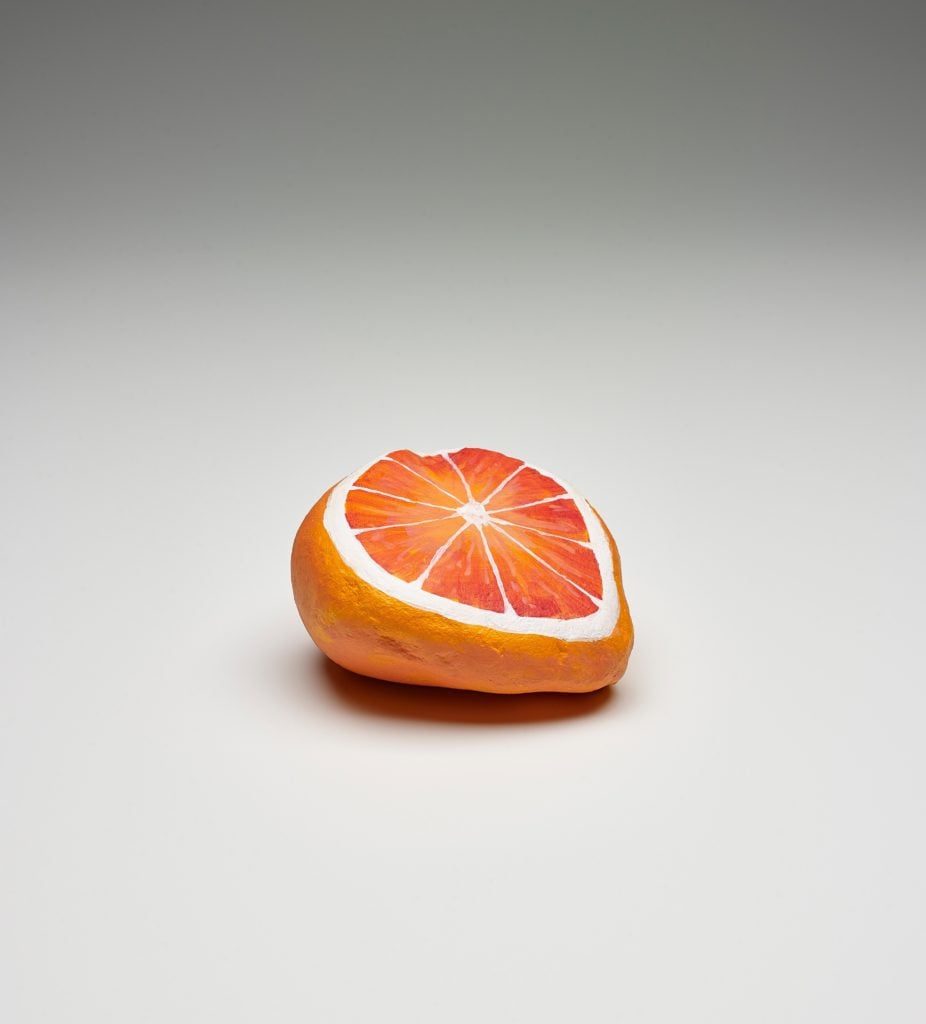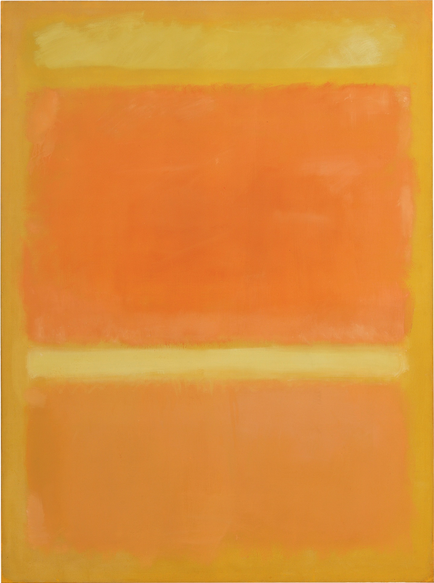
Have you ever found yourself wondering which came first: oranges the fruit or the red-yellow color? Well, orange-we-glad that you asked…
Oranges, the fruit, take their name from the Sanskrit nāraṅga meaning orange tree. Nāraṅga morphed via the Persian word nâranj and the French pomme d’orenge, meaning “apple of the orange tree.” The French city of Orange actually predates the name of the fruit, and is named after an old Celtic settlement Aurasio.
The anglicized norange and Spanish narangia experienced what is called a juncture loss—the dropping of a word’s first letter due to complications with indefinite articles. A norange became “an orange”. This has also happened with the words ‘apron’ from the French naperon, “umpire” which had been “numpire” from the French nompere, and the snake “adder” from Middle English “nadder.”

Mark Rothko, Untitled (Yellow, Orange, Yellow, Light Orange) (1955). Courtesy of Sotheby’s.
The fruits originally come from the foothills of the Himalayas between northeastern India and southern China. Initially a bitter fruit used largely medicinally, they began to be sold at European markets in the in the late 15th and early 16th centuries, having been transported into the Mediterranean by Portugese and Italian merchants.
But what were people calling orange-colored things before the fruit’s success at market? In English, before the turn of the 16th century, orange objects would be simply known as “yellow-red” or “geoluhread” in Middle English. There are also records of the word “saffron” being used to as a replacement for “orange” as a descriptor. In Geoffrey Chaucer’s 1390s mock epic Nun’s Priest Tale, a fox’s color is described as “betwixe yelow and reed’. In 1595, William Shakespeare tentatively described a beard as “orange-tawny” in A Midsummer Night’s Dream.
But not all languages have this homophonic issue. For example, in Russian the fruit is apel’sin (similar to the German apfelsine) and the color is oranzhevii. In Dutch the fruit is sinaasappel (meaning “Chinese apple”) while oranje is the color. And in Hebrew the color is catom but the fruit is tapuz, short for “tapuach Zahav” meaning “golden apple”.





